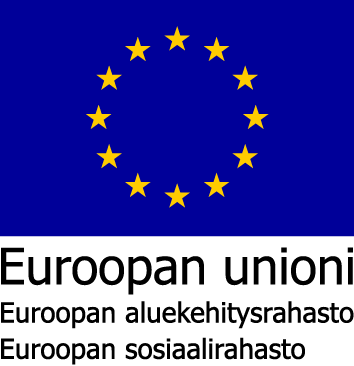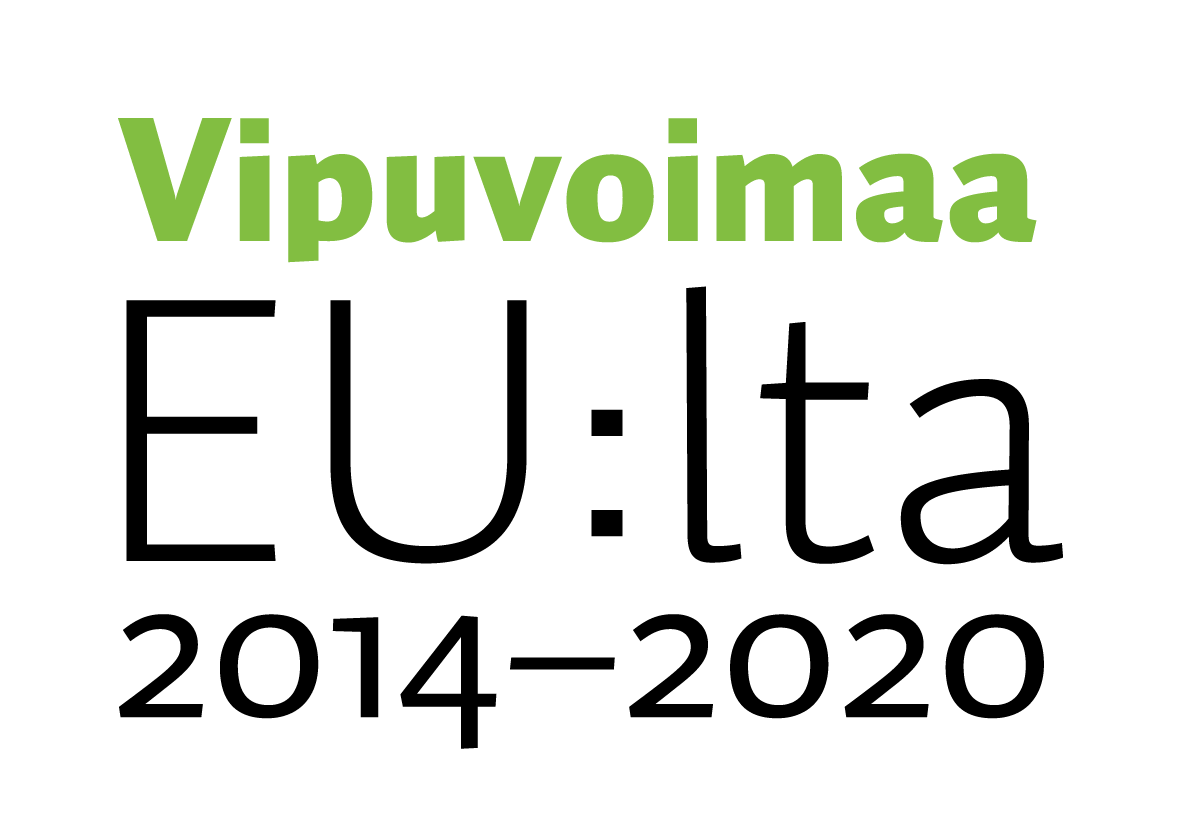

 |
 |
Hankekoodi: S22733
Hankkeen nimi: Luontolähtöinen työhyvinvointi
Toimintalinja: 3. Työllisyys ja työvoiman liikkuvuus
Erityistavoite: 7.1. Tuottavuuden ja työhyvinvoinnin parantaminen
Suunnitelman mukainen toteutusaika: Alkaa 3.1.2022 ja päättyy 31.12.2023
Toiminnan tila: Toiminta päättynyt
Vastuuviranomainen: Keski-Suomen elinkeino-, liikenne- ja ympäristökeskus
Hakijan virallinen nimi: Centria-ammattikorkeakoulu Oy
Organisaatiotyyppi: Ammattikorkeakoulu
Y-tunnus: 1097805-3
Jakeluosoite: Talonpojankatu 2
Puhelinnumero: +35868680200
Postinumero: 67100
Postitoimipaikka: Kokkola
WWW-osoite: http://www.centria.fi
Hankkeen yhteyshenkilön nimi: Marja-Liisa Hiironen
Yhteyshenkilön asema hakijaorganisaatiossa: Tki-asiantuntija
Yhteyshenkilön sähköpostisoite: marja-liisa.hiironen(at)centria.fi
Yhteyshenkilön puhelinnumero: +358040 5727769
Hakijoiden lukumäärä tai tuen siirto -menettely:
Luontolähtöinen työhyvinvointi-hanke toteutetaan vuosina 2022-2023.
Hankkeen päämäärä on luoda tutkittuun tietoon perustuvia uraauurtavia työhyvinvointia edistäviä konsepteja, etenkin aivotyötä tekeville työyhteisöille työssä jaksamisen ja tuottavuuden edistämiseksi.
Usein unohdetaan, että etenkin aivotyötä tekevät henkilöt tarvitsevat työympäristön, joka tukee aivojen kognitiivisia prosesseja, vahvistaa stressinsietokykyä sekä muistia. Aivot ovat herkkä elin ja muistisairaudet ovat vahvasti lisääntymässä työikäisten joukossa. Työkyvyttömyyseläkkeelle siirrytään useimmin mielenterveyden häiriöiden tai tuki- ja liikuntaelinsairauksien vuoksi, muun muassa työuupumuksen takia. Yli 20 000 henkilöä siirtyy vuosittain näistä syistä pois työelämästä. Myös lyhyiden sairauspoissaolojen syinä nousivat esille erilaiset tukielinrakenteiden ja mielen hyvinvoinnin ongelmat.
Ikääntyvien työssä jaksamista tukee kuntouttavien palveluiden yhdistäminen tavalliseen työhön sekä työhyvinvoinnin lisääminen. Luonnon hyvinvointivaikutuksista on paljon tutkittua tietoa. Työntekijät, jotka ulkoilivat luonnossa lähes päivittäin myös työaikaan raportoivat työhyvinvointinsa parhaimmaksi. Luontoympäristön elvyttäviä vaikutuksia voidaan aikaansaada jo 5-15 minuutin oleskelulla luonnossa. Luontolähtöisten interventioiden on todettu vaikuttavan positiivisesti psykologisiin, sosiaalisiin, fysiologisiin ja kognitiivisiin prosesseihin, sekä sairauksien oireiden vähenemiseen.
Hanke koostuu neljästä toimenpiteestä; aloitustyöpajoista “Luontolähtöiset interventiot”, luontointerventioiden toteutuksesta, arvioinnista ja työhyvinvoinnin luontomallista. Luontointerventiot tutustuttavat työyhteisöjä viiteen erilaisen interventioon, jotka vahvista työhyvinvoinnin eri osa-alueita.
Hankkeen tavoitteet ovat:
1. Työhyvinvointi ja yhteisöllisyys työyhteisössä ovat parantuneet ja työuupumus on pitkällä tähtäimellä vähentynyt.
2. Tarmokkuus ja luova ongelmanratkaisu työssä ovat vahvistuneet ja tuottavuus on parantunut.
3. Luontoliikunta ja terveelliset elintavat ovat lisääntyneet osallistujien työyhteisössä ja pitkällä tähtäimellä laajemmin myös muissa työyhteisöissä.
Hankkeen tulokset ovat:
1. Uusia työhyvinvointia edistäviä luontolähtöisiä toimintatapoja on valmistunut.
2. Kartoitus työympäristön ja sen lähiluontoympäristön hyödyntämismahdollisuuksia työhyvinvoinnin edistämiseksi on valmistunut.
3. Työyhteisöt ovat tutustuneet luonnon ja sen eri muotojen työhyvinvointia vahvistaviin vaikutuksista.
3. Osallistujat ovat kokeneet että heidän työhyvinvointinsa, työssä jaksamisensa ja tuottavuutensa ovat lisääntyneet.
Hankkeessa huomioidaan sukupuolten tasa-arvo niin, että käytännössä toimenpiteisiin pyritään sitouttamaan yhtä paljon naisia kuin miehiä. Hankkeessa huomioidaan yhdenvertaisuus esim. niin, että liikuntarajoitteisille henkilöille mahdollistetaan esteettömiä ulkoilureittejä. Kestävä kehitys selkeästi läpileikkaa koko hanketta alusta loppuun, esim. hyödynnetään lähiluontoa sekä kestävää elämäntapaa tukevia valintoja.
Hankkeen varsinaiset kohderyhmät ovat Kokkolan seudun pk-yritykset, yhdistykset ja julkiset organisaatiot, joissa työskentelee aivotyötä tekeviä työntekijöitä, kuten esim. it-alan henkilöstö.
Hakuvaiheessa mukaan on ilmoittautunut kirjallisesti ProAgria Keski-Pohjanmaa, atk-Lillhonga, Keski-Pohjanmaan sosiaalipsykiatrinen yhdistys ja Keski-Pohjanmaan liitto.
Neuvottelut hankkeeseen osallistumisesta on vireillä Kokkolan kaupungin ja Kokkolan ev.lut. seurakunnan kanssa mutta henkilöstömuutosten takia asian käsittely viivästyy.
Lisää osallistujia kohderyhmään rekrytoidaan myös hankkeen käynnistettyä.
Hankkeen välilliset kohderyhmät ovat muunlaiset ja muun kokoiset yritykset ja organisaatiot, jotka hyötyvät välillisesti hankkeen kehittämistoiminnasta, kuten esim. viranomaiset kuten Ely-keskukset, Centria-ammattikorkeakoulun ja Luonnonvarakeskuksen henkilöstö ja sidosryhmät. Välillinen kohderyhmä on myös osallistujien lähipiiri, joka hyötyy osallistujien parantuneesta hyvinvoinnista (sosiaaliset suhteet, jaksaminen) sekä laajemmin koko yhteiskunta ja sen hyvinvointi.
Myönnetty EU- ja valtion rahoitus: 169 791
Toteutunut EU- ja valtion rahoitus: 163 956
Suunniteltu julkinen rahoitus yhteensä: 212 240
Toteutunut julkinen rahoitus yhteensä: 204 946
Maakunnat: Keski-Pohjanmaa
Seutukunnat: Kokkolan
Kunnat: Kokkola
Jakeluosoite: Talonpojankatu 2
Postinumero: 67100
Postitoimipaikka: Kokkola
Suunniteltu: 15
Toteutunut seurantatietojen mukaan: 5
Suunniteltu: 60
| Välitön | Välillinen | |
| Ekologinen kestävyys | ||
| Luonnonvarojen käytön kestävyys | 9 | 10 |
| Kaikessa toiminnassa huomioidaan kestävän kehityksen periaatteet. Hankkeen kohderyhmää opastetaan luonnonvarjojen käytön kestävyyteen ja toiminta perustuvat ekologiseen kestävyyteen. Toimintoja pyritään järjestämään lähialueilla. Videoneuvotteluja suositaan, ja minimoidaan painotuotteidentuottaminen. Kohderyhmää opastetaan toimimaan ilmastomuutoksen riskiä vähentävillä tavoilla. | ||
| Ilmastonmuutoksen aiheuttamien riskien vähentäminen | 9 | 9 |
| Hankkeen kaikki luontolähtöiset toiminnat perustuvat periaatteeseen ilmastomuutoksen aiheuttamien riskien vähentämiseen. | ||
| Kasvillisuus, eliöt ja luonnon monimuotoisuus | 8 | 9 |
| Luonnossa huomioidaan luonnon monimuotoisen säilyttämisen periaatteet.Opastetaan esim. luontoarvoista. | ||
| Pinta- ja pohjavedet, maaperä sekä ilma (ja kasvihuonekaasujen väheneminen) | 0 | 0 |
| Ei vaikutusta. | ||
| Natura 2000 -ohjelman kohteet | 0 | 0 |
| Ei vaikutusta. | ||
| Taloudellinen kestävyys | ||
| Materiaalit ja jätteet | 10 | 10 |
| Osana kestävää yhteiskuntaa on kierrätys. Hanketoiminnassa vältetään jätteen muodostumista, esim. tulostetaan vain tarvittavat materiaalit ja vältetään kertakäyttöisiä astioita tapahtumissa. | ||
| Uusiutuvien energialähteiden käyttö | 0 | 0 |
| Ei vaikutusta. | ||
| Paikallisen elinkeinorakenteen kestävä kehittäminen | 10 | 10 |
| Hankkeessa edistetään paikallisen elinkeinorakenteen kestävää kehitystä, työhyvinvoinnin edistäminen ollessa keskeinen osa sitä. | ||
| Aineettomien tuotteiden ja palvelujen kehittäminen | 7 | 10 |
| Hankkeessa edistetään mm. toimintamallia, osana aineettomia tuotteita. Jatkossa esim. luontoyrittäjät voivat hanketoimenpiteiden pohjalta kehittää tuotteitaan ja palvelujaan. | ||
| Liikkuminen ja logistiikka | 9 | 10 |
| Liikkuminen sisältää vähäisesti julkisia tai yksityisliikennettä. Tarvittaessa suositaan yhteiskuljetusta. | ||
| Sosiaalinen ja kulttuurinen kestävyys sekä yhdenvertaisuus | ||
| Hyvinvoinnin edistäminen | 10 | 10 |
| Hankkeen päätavoite on työhyvinvoinnin edistäminen. Samalla kohderyhmän lähipiirin hyvinvointi paranee. | ||
| Tasa-arvon edistäminen | 10 | 10 |
| Yhdenvertaisuuden valtavirtaistaminen huomioidaan hankkeessa ja sen eri toimenpiteissä. | ||
| Yhteiskunnallinen ja kulttuurinen yhdenvertaisuus | 10 | 10 |
| Hanke vahvistaa luontokulttuurin asemaa toiminta-alueellaan. | ||
| Kulttuuriympäristö | 10 | 10 |
| Hyvin hoidettu kulttuuriympäristö (sisällä ja ulkona) lisää osallistujien hyvinvointia sekä alueen viihtyisyyttä ja vetovoimaa. | ||
| Ympäristöosaaminen | 10 | 8 |
| Ympäristöosaaminen on luonnollinen osa luonto-osaamista ja on näin osana hankkeentoimenpiteitä. Osallistujien tietoinen tietoisuus luontoympäristöstä ja ympäristöosaaminen lisääntyy, tuo uutta osaamista. Tiedon ja osaamisen lisääntyessä myös ympäristövastuullisuus vahvistuu. | ||
Luontolähtöinen työhyvinvointi -hanke toteutettiin vuosina 2022 ja 2023. Hankkeen päämääränä oli luoda tutkittuun tietoon perustuvia työhyvinvointia edistäviä konsepteja, etenkin aivotyötä tekeville työyhteisöille työssä jaksamisen ja tuottavuuden edistämiseksi. Hankkeen kohderyhmänä olivat eri aloilla aivotyötä eli tiedolla työskentelyä ja ajatustyötä tekevät työntekijät ja heidän työyhteisönsä. Työyhteisöille kehitettiin ja räätälöitiin heidän tarpeisiinsa soveltuvia ja kohdistettuja luontolähtöisiä työhyvinvoinnin menetelmiä. Varsinaiset kohdeorganisaatiot olivat Kokkolan seudun pk-yritykset, yhdistykset ja julkiset organisaatiot, joissa työskentelee aivotyötä tekeviä työntekijöitä, kuten esim. it-alan ja taloushallinnon henkilöstöä.
Tavoitteena oli uudistaa työkulttuuria ja työympäristöjä luontolähtöisten menetelmien avulla vähentämään työntekijöiden kognitiivista kuormitusta, sujuvoittamaan aivotyön tekemistä sekä lisäämään yhteisöllisyyttä, työssä jaksamista, voimavaroja ja hyvinvointia. Tällä tavoin pyrittiin pitkällä tähtäimellä vahvistamaan työntekijöiden pitkää ja tervettä työuraa ja työyhteisöjen hyvinvointia, sekä samalla myös kansanterveyttä ja yhteiskunnan hyvinvointia.
Asiakasymmärrystä kerrytettiin osallistujille kohdistetuilla kyselyillä, järjestämällä osallistujille erilaisia tilaisuuksia sekä keskustelemalla heidän kanssaan työstä, työn tekemisen tavoista, aivotyön sujuvoittamisesta sekä luontolähtöisten menetelmien hyödyntämisestä työhyvinvoinnin edistämiseksi. Henkilöstöä osallistettiin räätälöimällä kullekin työyhteisölle sopivia luontointerventioita kokeiltavaksi. Hankkeessa kahdeksan erilaista työyhteisöä ja yli 80 työntekijää testasi arjessaan neljää erilaista luontointerventiota. Testattuja luontolähtöisiä interventioita olivat: Luontohyppely, Vehreä muisti, Virikkeellinen työympäristö sekä Kaikenkarvaiset ystäväni.
Suurin osa interventioihin osallistuneista, noin 80 %, koki intervention tukevan työssä jaksamista. Etenkin Virikkeellinen työympäristö (esim. pienimuotoinen viljely ja kasvatus, sisäilman seuranta) sekä Vehreä muisti (esim. hedelmäkorit, salaattipylväät) koettiin hyviksi tavoiksi vahvistaa työssä jaksamista ja työhyvinvointia. Luontohyppelyt koettiin hyviksi, mutta tässä interventiossa esiintyi eniten haasteita, kuten vaikeus löytää sopiva aika ja ympäristö ulkoilulle. Kokeilut voidaan siksi myös kokea rasitteena, etenkin jos organisaatio ja sen työntekijät ovat jo ennestään rasittuneita. Tulee myös huomioida, että olemme kaikki erilaisia, eikä yksi ja sama tauotuksen malli sovi kaikille. Vapaaehtoisuus on siksi tärkeää. Interventioiden tuoma tauotus sekä sosiaalinen vuorovaikutus olivat keskeisiä kaikille interventioille. Työn tauotus sekä sosiaalinen vuorovaikutus ovat keskiössä työssä jaksamiselle sekä aivojen palautumiselle työn lomassa.
Hankkeen neljästä toimenpiteestä koottiin kustakin oma tietopaketti: luontohyppelyiden, vehreän muistin, virikkeellisen työympäristön ja eläinintervention tietopaketit. Luontolähtöisen työhyvinvoinnin toimintamalli luotiin helpottamaan kullekin työyhteisölle mahdollisimman sopivan ja vaikuttavan luontolähtöisen toiminnan suunnitteluun ja toteutukseen. Luontolähtöisiä kokeiluja koskeva toimintamalli ja muut materiaalit löytyvät mm. Terveyden ja hyvinvoinnin laitoksen Innokylän sivuilta https://innokyla.fi/fi/toimintamalli/tyohyvinvoinnin-edistaminen-luontointerventioiden-avulla
Kahden viikon kokeilu ei ole tuottanut pysyviä vaikutuksia organisaatioiden arkeen, mutta on antanut maistiaisen erilaisista mahdollisuuksista, joiden pohjalta on hankkeen päätyttyäkin hyvä jatkaa luontolähtöisyyden tuomista työpäivän osaksi.